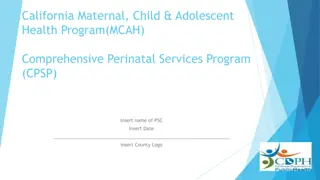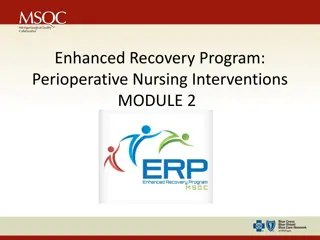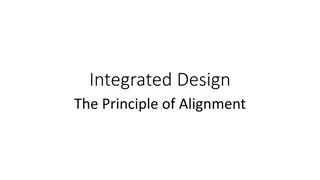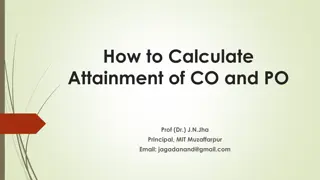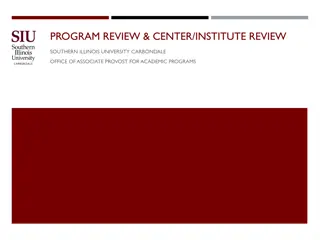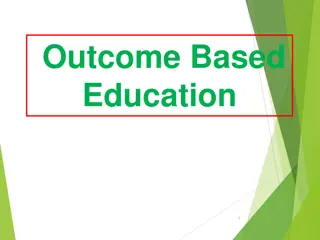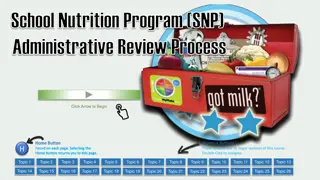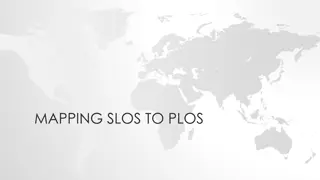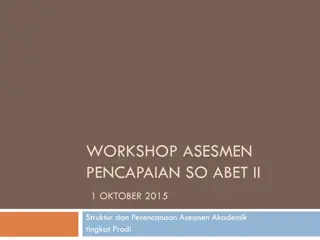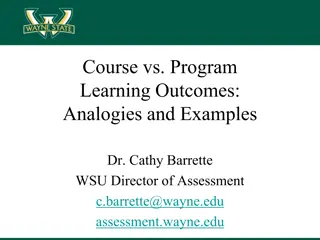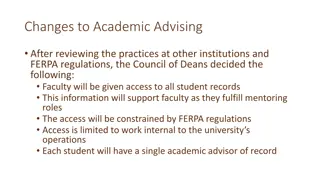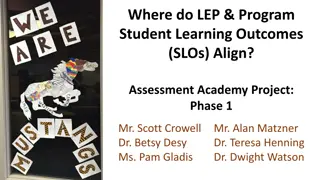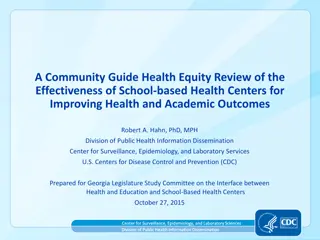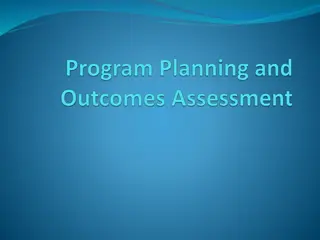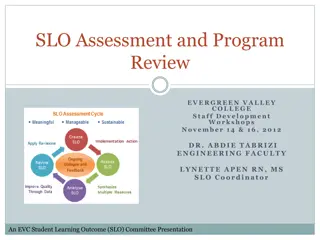Re-imagining Program Review Processes for Enhanced Student Outcomes
Explore the integration of Guided Pathways with program review processes, evaluating their overlap and differences to drive systemic change. Redesigning program reviews to focus more on student outcomes and continuous improvement, aligning with accreditation standards for quality enhancement.
Download Presentation

Please find below an Image/Link to download the presentation.
The content on the website is provided AS IS for your information and personal use only. It may not be sold, licensed, or shared on other websites without obtaining consent from the author. Download presentation by click this link. If you encounter any issues during the download, it is possible that the publisher has removed the file from their server.
E N D
Presentation Transcript
Program Review Processes and Guided Pathways Cheryl Aschenbach, ASCCC Secretary, GPTF Sarah Harris, ASCCC GPTF, College of the Sequoias Jeffrey Hernandez, ASCCC GPTF Lead, East Los Angeles College Ginni May, ASCCC Vice President, GPTF Co-Chair Erik Shearer, ASCCC GPTF Lead, Napa Valley College
Session Description Pathways and programs overlap, how are they different and how are they intermingled? Can we really integrate GP without evaluating our current program review processes? How will the integration of GP and Program Review lead to strong learning outcomes for students?
Overview Program Review falls under #9 of the 10+1 Policy development and implementation matters for processes in program review Re-imagining/revising program review processes as a catalyst for systemic change Redesigning program review to be less institutional/compliance-focused and more relevant and student-focused Using program review data and analysis to support Guided Pathways institutional redesign efforts Using program review revisions to show continuous quality improvement in accreditation standards
What is a Program? Title 5 55000(m): An Educational program is an organized sequence of courses leading to a defined objective, degree, a certificate, a diploma, a license, or transfer to another institution of higher education. ACCJC Eligibility Requirements and Standards: The word, program is used 21 + 83 = 104 times but NOT defined College definitions/example most important Pathways and programs pathways specific definition
Why Program Review? How else can we know what is working and what needs improvement? External expectations Internal efforts
Why is Program Review Required? Compliance: Statute, regulation, guidance, and accreditation all focused on continuous improvement California Ed Code 66050 Title 5 55003(b)(4) PCAH, 7th Edition Regional Accreditation ACCJC Standard I.B.5 Standard I.B.9
Why Should We Do Program Review? It is a process by which we: Maintain high quality programs by addressing currency in curricular offerings and student services Reflect the college Mission, Vision, Core Values, and student population Inform the planning and budgeting processes (facilities, IT, professional development, staffing, instructional needs, student services) Ensure continuous program and service improvement Determine the future needs and goals of the college s educational programs
Imagine Student-Centered Program Review 1. Who are the students entering my program? Who and how many declared a program of study? Who and how many are enrolled in a program course but not in the declared program? Why? Why did students drop? 2. How are students progressing through the courses in each program both major courses and general education courses? What are actual student course taking patterns? Why? How are students completing their English, ESL, and mathematics pathways? within what timeframe? 3. What are the completion outcomes for students? Do students see value in the education they received? How do you know? How does the college ensure learning? How long are students taking to complete their program? Why? 9
Student-Centered Program Review How can the student voice be included? In the Program Review process [student membership on committees (if they exist)] In evaluating programs (surveys, and such ) How do you learn about student educational goals and assess programs to see that their goals are being met? How are disaggregated data used to identify and address equity gaps? How does the college evaluate institutional program impacts on all students: full-time, part-time, first time in college, continuing, returning, and the like?
Quantitative Data vs Qualitative Data Quantitative data may show success, persistence, completion, and more, but does it tell the entire story? To move from institution-centered compliance to student- focused continuous improvement and equity, qualitative data is necessary What qualitative data is being collected that reflects direct student experience? How can we collect qualitative data in addition to quantitative data? How can we incorporate the student experience as an engine of improvement?
Guided Pathways & DEI-Informed Program Review What changes are you seeing that could be a result of implementation of Areas of Interest/Meta Majors ? How are disproportionately impacted students being served by the college s guided pathways framework? How might changes in counseling and student services be contributing to improved student outcomes? What resources are needed in order to move towards the achievement of equitable student outcomes and a more student-focused culture? professional development of all employees working in a program faculty hiring facilities How is diversity, equity, and inclusion being evaluated in program review?
Guided Pathways, Scheduling & Program Review Through Guided Pathways implementation, many colleges are creating academic program maps to "clarify the path" for students Does your program review help assess the efficacy of your academic maps? Are your academic maps helping inform student- centered scheduling? Does your program review incorporate enrollment and completion data to identify how well your scheduling aligns with academic maps? By accounting for student course taking patterns, program can better ensure their required courses are offered in way that helps students attain their educational goals in a timely manner. 13
Student-Centered Program Review Data in Action How do programs use the student data once it is brought into the process? What strategies result from this process? How does the program document the use of student data including identifying gaps? How does the program document the changes made using student data? What systems are in place to measure the impact of changes? Documentation of these processes is excellent evidence for Accreditation
PLOs and Program Review How will the integration of GP and Program Review lead to strong learning outcomes for students? Program Learning Outcomes Assessment Program = a specific award (e.g. Accounting AS) Can include more qualitative measures Student learning Student-focused (what a student knows/can do) Program Review Program = may be an area or collection of awards (e.g. Accounting Quantitative/ Data-driven Student success Institution-focused (curriculum, enrollment, resources, staffing, etc.)
Ensure Learning What would it mean to incorporate PLO assessment in Program Review? Student learning directly ties to institutional decisions: resource allocation, staffing, curriculum, etc. Faculty focus on questions that interest them most what are students learning, where do they learn it, how can we improve their learning? Qualitative and Quantitative data work together to inform decisions. Data has a context.
Q&A What changes (if any) have you made to program review as a result of Guided Pathways? What do you do in your program review process that is student- centered? How do you incorporate equity in program review? How do you incorporate learning outcomes in program review?




